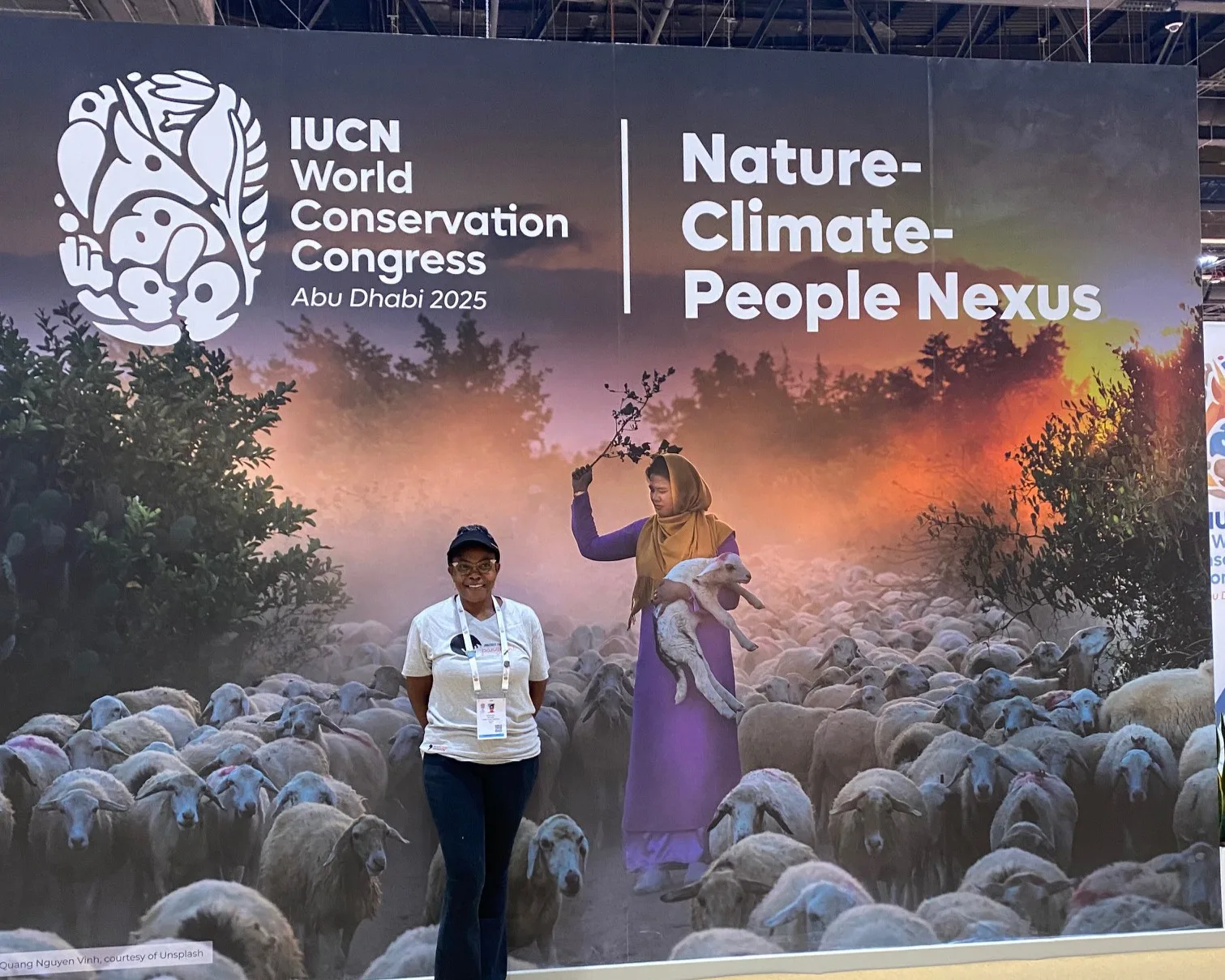By Natasha Kabanda
“To protect nature, we must protect its protectors.” The words of IUCN President Razan Al Mubarak echoed through the vast halls of Abu Dhabi National Exhibition Centre, setting the tone for the IUCN World Conservation Congress 2025. From 9 to 15 October 2025, more than 10,000 people from over 140 countries converged in the United Arab Emirates for what has become the world’s most influential gathering for conservation and sustainable development. Scientists, policymakers, Indigenous leaders, youth advocates, business innovators, and conservation practitioners met under the theme “Powering Transformative Conservation,” a call to reimagine how humanity protects the planet.
Among the diverse voices was Zambia’s own Suwilanji Sichone, Pangolin Programme Manager at WCP Zambia. Her presence at the Congress was a bridge between field conservation and global policy. As someone who spends her days rescuing, rehabilitating, and releasing pangolins, one of the world’s most trafficked mammals, Suwilanji took with her the stories of the silent victims of wildlife crime and the dedicated people who fight daily to protect them.
The IUCN Congress is held every four years and serves as the world’s largest environmental decision-making forum. It brings together conservation stakeholders to debate, vote on, and set global priorities for conservation. The 2025 Congress was a mosaic of innovation and collaboration, with more than 1,400 sessions, exhibitions, and dialogues exploring how conservation can drive change across economies, ecosystems, and societies. Key discussions focused on scaling up resilient conservation action, reducing climate overshoot risks, delivering equity, building nature-positive economies, and driving innovation and leadership for conservation.
For Suwilanji, this platform was both educational and affirming. Her work with WCP in Zambia centres on pangolins, shy, nocturnal mammals often misunderstood but critically endangered due to poaching and illegal trade. Through WCP, she works closely with Zambia’s Department of National Parks and Wildlife (DNPW) to ensure that every rescued pangolin is given a second chance at life. Emphasising that each rescued pangolin has its own personality, feeding preferences, different waking or sleeping hours, and unique responses to rehabilitation, which underscores the complexity and nuance of species recovery. Once strong enough, each pangolin is released back into the wild, fitted with a small transmitter so that its movements can be tracked and survival monitored. The data collected is vital as it feeds into broader research and conservation strategies.
The Congress showcased remarkable innovations, from new climate resilience tools and sustainable financing models to cutting-edge biodiversity monitoring technologies. Countries shared lessons on integrating conservation into national economies, while Indigenous leaders urged the world to recognise traditional knowledge as equally critical to ecological survival. It was a convergence of minds and missions, united by a belief that conserving nature requires systemic transformation, one that values both people and the environment.
For Suwilanji, connecting local experience to global action was one of the most rewarding aspects of participating in such a global forum. The Congress provided a space for bridging grassroots realities with global policies. The Members’ Assembly is IUCN’s highest decision-making body. It discusses and votes on motions that set conservation priorities, resolutions, and global policy directions. Having practitioners like Suwilanji attend ensures that decisions are grounded in lived field experience from pangolin range states. Her insights help inform policy, such as strengthening wildlife crime legislation, improving rescue and rehabilitation protocols, supporting capacity building for rangers and first responders, and embedding monitoring data into species recovery frameworks.
The 2025 Congress ended with a renewed global commitment to “power transformative conservation,” calling for stronger cooperation between nations and organisations. Delegates adopted resolutions aimed at accelerating biodiversity protection, addressing climate risks, and ensuring that conservation is inclusive and just. For participants like Suwilanji, the event reaffirmed a fundamental truth: that global change begins with local action, and every rescued pangolin, every trained responder, every informed community member contributes to a larger, collective mission to sustain life on Earth.
As Razan Al Mubarak’s words continue to echo, “To protect nature, we must protect its protectors” Suwilanji’s story stands as living proof. Ultimately, her journey from front-line pangolin rescuer in Zambia to representing her work on a global stage in Abu Dhabi demonstrates the critical link between local action and global policy. It reinforces that protecting nature means protecting those who dedicate their lives to that mission. The message of the Congress and Suwilanji’s participation together remind us that conservation is not only about species or habitats; it is equally about the people working day by day to save those species and giving them the support, knowledge, recognition and resources they need to succeed.


0 Comments